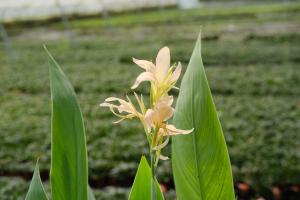How to Plant Dutch Iris in Pots
Dutch iris is an exquisite and popular flowering bulb that blooms in shades of blue, purple, or white. They are easy to grow and care for, making them a perfect choice for beginners. Planting them in pots is an excellent way to add beauty to your home, patio, or balcony. Here are the steps to follow when planting Dutch iris in pots:
Step 1: Choose the Right Pot
The size and material of your pot are crucial when planting Dutch iris. The pot should be spacious enough for the bulb to grow and deep enough to allow for proper drainage. Choose a pot made of high-quality material such as terracotta or glazed ceramic. These materials are durable and allow air to pass through the roots, preventing them from rotting.
Step 2: Prepare the Soil
Preparing the soil is the second step when planting Dutch iris bulbs in pots. The soil should be fertile, well-draining, and enriched with organic matter. Dutch iris requires a neutral pH soil between 6.0 and 7.5. Mix a good quality potting soil with perlite, sand, or vermiculite to improve drainage. Add some organic matter such as compost or well-rotted manure to the soil to provide nutrients that will help the bulbs grow.
Step 3: Planting the Bulbs
Plant the Dutch iris bulbs about six inches apart from each other in the pot. Make sure to plant them with the pointed end facing upwards. Cover the bulbs with soil, leaving the top one-third of the bulb exposed. Water the pot immediately after planting to help the soil settle around the bulbs.
Step 4: Watering
Dutch iris bulbs require adequate watering to grow well. Keep the soil moist but not waterlogged. Water the pot regularly to ensure that the soil remains constantly moist. Avoid overwatering, as it may cause the bulbs to rot.
Step 5: Provide Light
Dutch iris bulbs require plenty of sunlight to grow and bloom. Place the pot in an area that receives full sun for at least six hours a day. If you live in an area with high temperatures or strong winds, it is advisable to place the pot in an area that gets some shade during the hottest part of the day.
Step 6: Fertilizing
Once the Dutch iris plants have started growing, you can consider fertilizing them with a balanced fertilizer. Apply the fertilizer as per the instructions on the packet to prevent over-fertilizing. Over-fertilizing may lead to burning of the plant or may cause the bulbs to rot.
Step 7: Maintenance
Dutch iris bulbs are relatively low maintenance. However, they still require some care to thrive. Keep the soil moist but not waterlogged, remove any dead leaves or stems, and fertilize appropriately. Once the plants have bloomed, you can cut the flowers and place them in a vase to enjoy indoors.
Conclusion
Planting Dutch iris in pots is an excellent way to add beauty and color to your outdoor space. Follow the above steps, and you will have healthy and vibrant Dutch iris blooms in no time. Remember, proper watering, adequate fertilizing, and regular maintenance are essential for healthy growth and blooming.

 how many times do yo...
how many times do yo... how many planted tre...
how many planted tre... how many pine trees ...
how many pine trees ... how many pecan trees...
how many pecan trees... how many plants comp...
how many plants comp... how many plants can ...
how many plants can ... how many plants and ...
how many plants and ... how many pepper plan...
how many pepper plan...




























